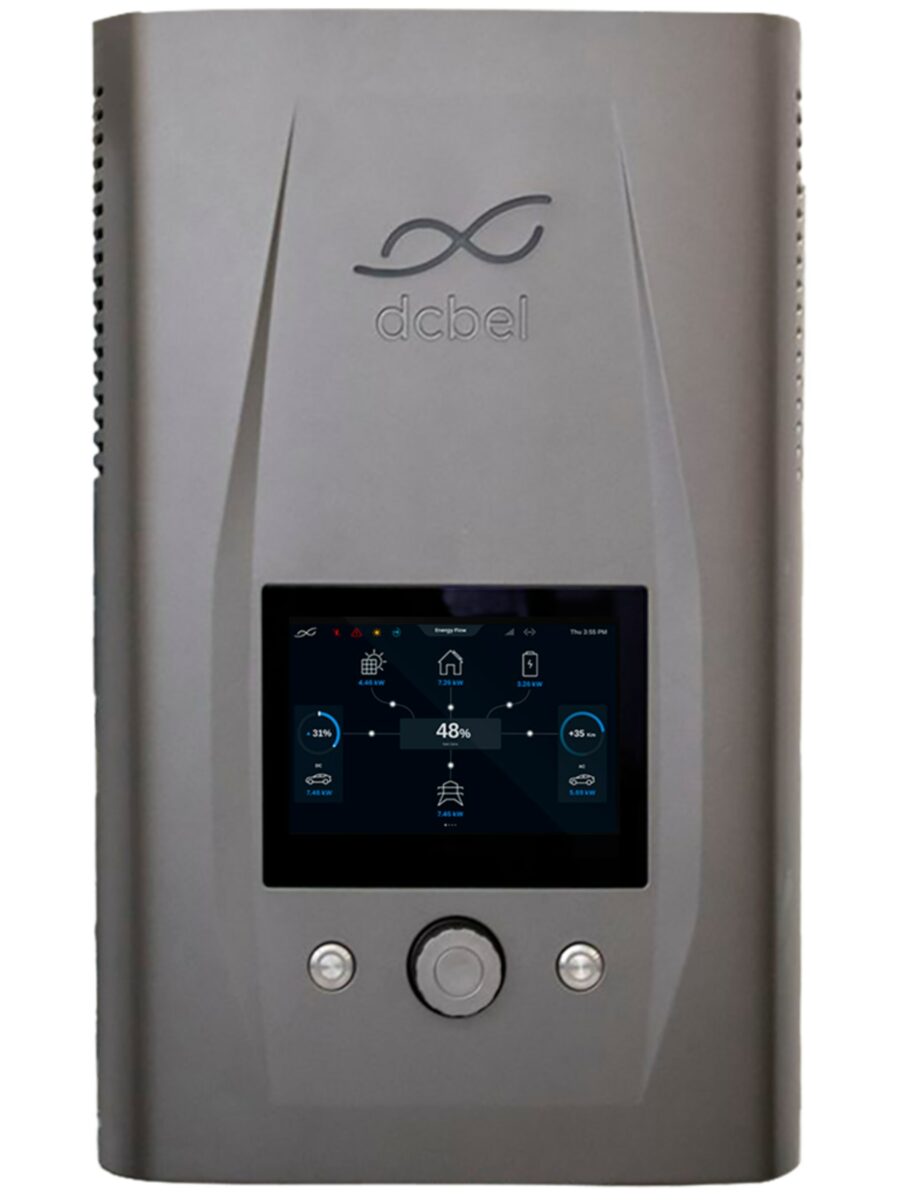The California Energy Commission (CEC) announced it will award smart home energy company Dcbel the largest tranche of funding under its Responsive, Easy Charging Products With Dynamic Signals (REDWDS) program, granting a total of $52 million. The program supports electric vehicle-to-grid and vehicle-to-X charging and discharging technologies.
The competitive grant funds will support the deployment of home energy stations throughout California. Dcbel will collaborate with UC Davis, Berkeley Laboratory, Southern California Edison, Sonoma Clean Power, and Grid Alternatives, to execute the project.
The REDWDS program focuses on funding projects that enable customers to readily respond to dynamic signals on the electric grid, minimizing charging and discharging costs for electric vehicles at home.
Dcbel’s solution is comprised of a home energy station, a UL certified bidirectional DC electric vehicle charger that doubles as a solar and stationary battery inverter. The home energy system is controlled by the company’s edge computing platform, called Orchestrate, which plans whether to use, store, or sell electricity based on grid price signals and homeowner preferences. The company’s solution also includes Dcbel Chorus, a real-time technical aggregation Internet of Things (IoT) software platform.
“With minimal intervention, [home energy station] customers will find their EV charged and ready when they need it using the least costly energy source available,” said Dcbel. “Customers can subscribe seamlessly and safely to multiple energy programs provided by utilities, energy service providers, microgrids and virtual power plants through Dcbel’s app-based platform.”
The company said customers can partake in vehicle-to-grid incentive programs by browsing the Dcbel app hub, making it easier for customers to access such programs.
In addition to revenues provided by dynamic grid response, Dcbel said its customers can benefit from increased energy independence and resilience. The home energy station can power homes through grid outages lasting multiple days by leveraging the large amount of energy stored in EVs. For increased energy independence, customers can connect solar panels and a home battery to the home energy station.
“Our all-in-one solution is ready to change the way homes interact with the grid and, crucially, allows people to make use of their EV’s energy for backup power and to discharge their EV battery to provide grid flexibility services,” said Dan Fletcher, chief business development officer, Dcbel.

This content is protected by copyright and may not be reused. If you want to cooperate with us and would like to reuse some of our content, please contact: editors@pv-magazine.com.









By submitting this form you agree to pv magazine using your data for the purposes of publishing your comment.
Your personal data will only be disclosed or otherwise transmitted to third parties for the purposes of spam filtering or if this is necessary for technical maintenance of the website. Any other transfer to third parties will not take place unless this is justified on the basis of applicable data protection regulations or if pv magazine is legally obliged to do so.
You may revoke this consent at any time with effect for the future, in which case your personal data will be deleted immediately. Otherwise, your data will be deleted if pv magazine has processed your request or the purpose of data storage is fulfilled.
Further information on data privacy can be found in our Data Protection Policy.